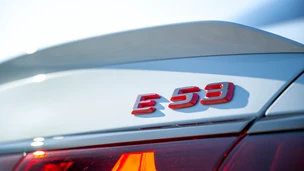If you had asked me in 2002 whether I thought I would still be writing about the Volvo XC90 nine years later, I would have replied that I very much doubted it. Back then there was an enormous amount of interest in the car, to the point where people were e-mailing the magazine asking for driving impressions months before there was anything to drive, but surely that sort of popularity couldn't extend for nearly a decade?Well, it has. The XC90 achieved higher sales in the UK in 2010 than it had in any previous year, and it remains Volvo's most popular model in this country. If I say, therefore, that not a lot has been changed since the first time I climbed aboard an XC90, you'll realise that not a lot had to be.There are some differences, of course. One of them - the main reason for writing this article - is the introduction of the new D5 turbo diesel engine, which these days produces a maximum of 198bhp, or 35bhp more than D5s once did. That amount of power isn't going to turn a car of this size and shape into a road burner, but it does mean that the XC90 can be made to accelerate reasonably swiftly when required.You never have to work at this, burying the accelerator pedal into the carpet and gripping the steering wheel with a white-knuckled grip as globules of sweat ping from your forehead, and the resulting relaxed driving style is worth far more than the official straightline figures (which are, for the record, 0-60mph in 9.7 seconds and 127mph flat-out) can convey.The test car was more relaxing still thanks to the fitment of Volvo's Geartronic automatic gearbox, which slips smoothly from one ratio to another. And although it's hardly at the top end of anyone's driving dynamics table, it can deal with a twisty country road without undue fuss.One thing that keeps surprising me about the XC90 is its size. Looked at in isolation, without visual clues nearby, it seems fairly compact, but it's actually longer than an Audi Q5 or Volkswagen Touareg and less than two inches shorter than a BMW X5. In terms of luggage space it beats all three, with a maximum figure (all seats down, loaded to roof level) of 1837 litres.It's also just long enough for Volvo have been able to squeeze in seven seats in three rows. As is generally the case with these things, the two seats in the rear are really only suitable for children or particularly small adults, though they're slightly easier to get at than in some cars with the same layout.My biggest problem with the XC90 is that it's so difficult to see out of - a curious but sadly familiar slip-up from a company which has been so devoted to safety matters for so long. This doesn't appear to have put people off buying it, though that must be partly because no other manufacturer offers a better alternative.At the time of writing the list price of this car is under £40,000, but it doesn't take long to push it well over that figure. The test car would cost £42,845 new thanks to the addition of metallic paint, a glass sunroof (£870 - gasp), third-row air-conditioning, the Volvo On Call system, a winter pack and something called Active Bending, which sounds rather saucy but is actually just Volvo's description of cornering headlights.

Our Rating



